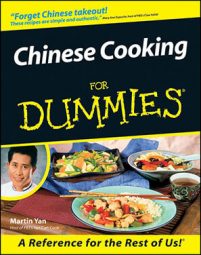Demand for Chinese vegetables has risen dramatically, as Asian-American communities grow and diners seek new taste experiences. Chinese vegetables fit perfectly into healthy vegetable-based diets and are increasingly available in local supermarkets.
Bean sprouts: These silver-white stalks with their yellow heads and long tails aren’t exactly exotic to most North American diners.
Bok choy: Has crunchy, white, mildly tangy stalks and soft, peppery, green leaves.
Chinese broccoli: Its tiny white flowers and dusty green stems and leaves resemble leafy vegetables such as mustard greens or kale.
Chinese chives: Green chives resemble long, wide blades of grass. Yellow chives are shorter and less fibrous, with a mild onion-garlic flavor and aroma. Flowering chives have the firmest, crispest stalks and little edible flowering buds at the tips.
Chinese eggplants: Generally 3 to 9 inches long and white to lavender in color. They’re relatively sweet and tender.
Cilantro: This herb goes by many names — cilantro, Chinese parsley, and coriander, to list its most common aliases.
Daikon radish: Occasionally called the giant white radish, they have the same sweet, peppery flavor and refreshing crunch as their Western cousins.
Napa cabbage: Has a short, football-shaped body with sweet, creamy white stalks ending in lacy, ruffled, pale green leaves.
Snow peas: Bright green, sweet, and crisp-tender.
Taro root: Brownish, hairy-looking, rough-skinned root that ranges in size from a golf ball to a melon. Taro root has a sweet, nutty flavor and whitish gray to light purple flesh.
Winter melon: Looks kind of like a dusty green, overgrown pumpkin. Its inner flesh is pale green to milky white and has a faint, sweet-peppery taste.
Yard-long beans: Okay, maybe these beans aren’t all a full yard long. The pencil-thin beans range in color from pale to dark green and have a shiny but somewhat bumpy surface.

